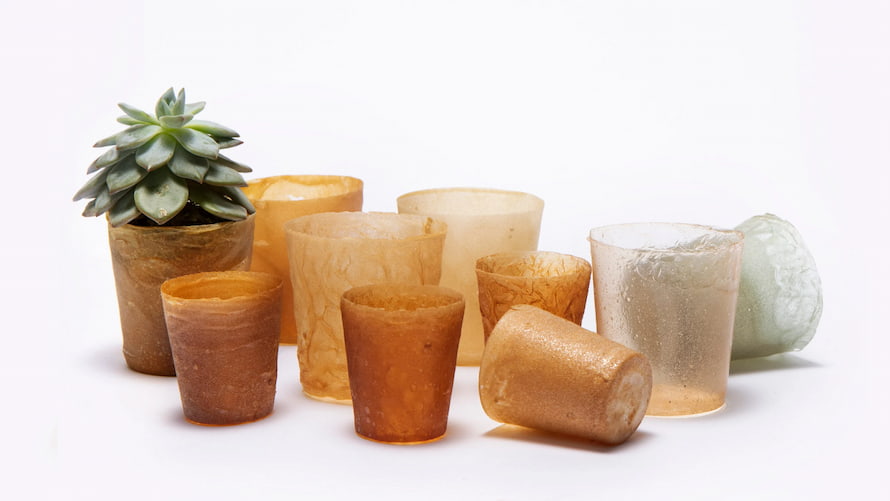As the demand for sustainable materials in additive manufacturing grows, researchers and manufacturers are exploring renewable alternatives to conventional plastics. One such material garnering attention is bioplastic from potato starch. Derived from an abundant and renewable resource, this bioplastic offers environmental advantages. But how viable is it for 3D printing applications? This article delves into the properties, benefits, challenges, and current research surrounding the use of potato starch-based bioplastics in 3D printing.
1. Understanding Bioplastic from Potato Starch
Bioplastic from potato starch is a biodegradable polymer produced by processing starch extracted from potatoes. The starch comprises amylose and amylopectin, polysaccharides that can form thermoplastic materials when gelatinized and combined with plasticizers like glycerol. This combination results in a material that can be molded into various forms, making it a potential candidate for applications requiring biodegradable plastics.
The appeal of bioplastic from potato starch lies in their biodegradability, renewability, and reduced environmental impact compared to petroleum-based plastics. They decompose naturally, reducing long-term pollution and reliance on fossil fuels.
.jpg)
Bioplastic from potato starch is a biodegradable polymer produced by processing starch extracted from potatoes.
2. Properties Relevant to 3D Printing
For a material to be suitable for 3D printing, especially in fused deposition modeling (FDM), it must exhibit specific properties:
- Thermal Stability: The material should withstand the high temperatures involved in the printing process without degrading.
- Mechanical Strength: Post-printed objects should possess sufficient strength and durability for their intended use.
- Rheological Properties: The material must have appropriate flow characteristics to be extruded through the printer nozzle smoothly.
Studies have shown that native bioplastic from potato starch have limitations in these areas. For instance, one research published in ResearchGate indicates that pure potato starch-based filaments exhibit brittleness and slippage issues during printing, making them challenging to use in standard 3D printers.
3. Enhancing Printability Through Blends and Additives
To overcome the inherent limitations of pure bioplastic from potato starch, researchers have experimented with blending them with other polymers. One notable approach involves combining potato starch with polylactic acid (PLA), a biodegradable thermoplastic derived from renewable resources. Such blends aim to harness the biodegradability of starch and the mechanical strength of PLA.
A study published in the ACS Sustainable Chemistry & Engineering journal demonstrated that PLA–potato thermoplastic starch filaments exhibited improved mechanical properties suitable for 3D printing applications . These composite materials showed enhanced flexibility and strength, making them more compatible with existing 3D printing technologies.
Additionally, incorporating additives like nanocellulose or natural fibers has been explored to reinforce the material's structure and improve its printability. Such modifications aim to address issues related to moisture sensitivity and mechanical weakness inherent in starch-based bioplastics.
4. Environmental and Economic Considerations
The environmental benefits of using bioplastic from potato starch are significant. They are derived from renewable resources, reduce reliance on fossil fuels, and are biodegradable, minimizing long-term environmental impact.
Economically, potatoes are widely cultivated and relatively inexpensive, making them an accessible raw material for bioplastic production. However, the processing and modification required to make potato starch bioplastics suitable for 3D printing can increase production costs. Balancing environmental benefits with economic feasibility remains a key consideration for widespread adoption.
.jpg)
The environmental benefits of using bioplastic from potato starch are significant.
5. Current Applications and Future Prospects
While pure potato starch bioplastics face challenges in 3D printing applications, their blends and composites have found use in producing biodegradable items like packaging materials, disposable utensils, and agricultural films.
The ongoing research and development in enhancing the properties of bioplastic from potato starch suggest a promising future. As technology advances, it's plausible that more efficient and cost-effective methods will emerge, making these bioplastics more viable for a broader range of applications, including 3D printing.

6. Conclusion
Bioplastics from potato starch present an environmentally friendly alternative to traditional plastics. While challenges exist in their application to 3D printing, particularly concerning mechanical properties and printability, ongoing research into blends and additives offers promising solutions. As the demand for sustainable materials grows, the role of potato starch bioplastics in additive manufacturing is likely to expand, contributing to more eco-conscious production practices.
7. About EuroPlas and BiONext
EuroPlas is a leading global manufacturer of plastic compounds, operating seven factories across Vietnam and Egypt, with an annual production capacity of 0,8 million tons. Their products are distributed in over 95 countries worldwide.
Among EuroPlas's six primary product lines is BiONext, a range of biodegradable compounds developed to support sustainable development goals. BiONext products are formulated from renewable biomass sources, including PLA, PHA, and other biodegradable polymers like PBAT. While BiONext does not currently utilize potato starch-based bioplastics, it embodies EuroPlas's commitment to providing eco-friendly material solutions across various industries.
If you're seeking sustainable material solutions or wish to learn more about BiONext products, please visit our Blog for the latest updates or reach out via our Contact Page for personalized consultation.